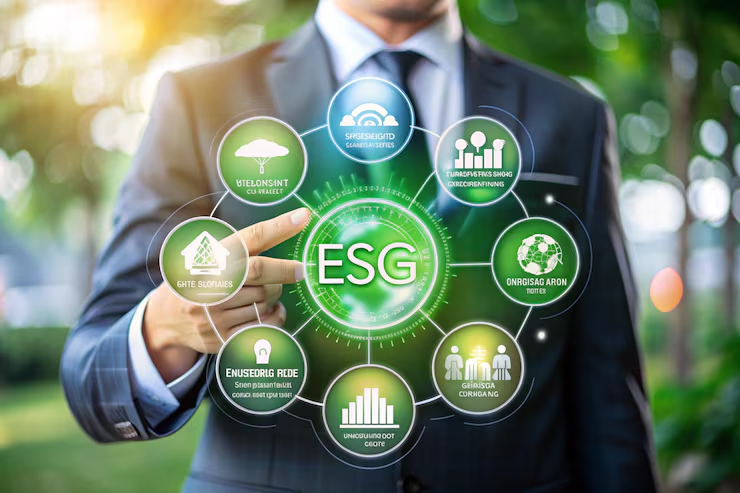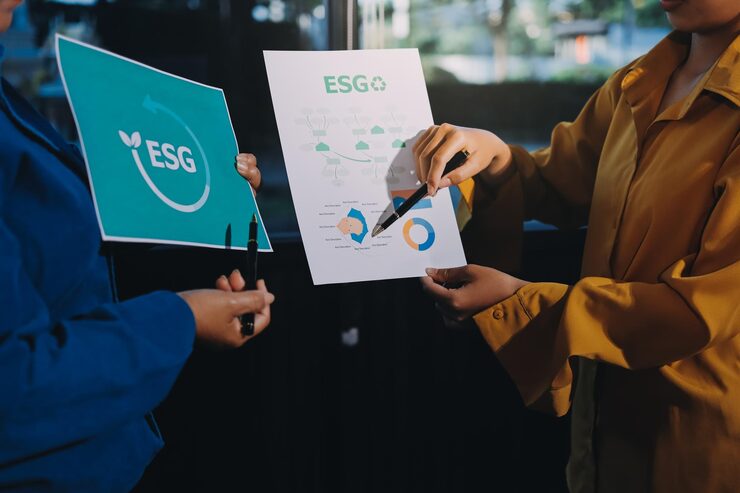Top ESG Reporting Frameworks
GRI, BRSR, CSRD, ISSB explained

In today's business landscape, Environmental, Social, and Governance (ESG) reporting has evolved from a nice-to-have corporate initiative to a fundamental business requirement. With investors managing over $30 trillion in assets now considering ESG factors in their decisions, and regulations mandating sustainability disclosures across major economies, companies can no longer afford to treat ESG reporting as an afterthought.
However, navigating the complex ecosystem of ESG reporting frameworks can feel like trying to solve a puzzle with pieces from different boxes. Each framework has its own standards, requirements, and focus areas, leaving many organizations confused about which path to take. This comprehensive guide breaks down the four most influential ESG reporting frameworks shaping corporate sustainability disclosure today: GRI, BRSR, CSRD, and ISSB.
Global Reporting Initiative (GRI): The Pioneer of Sustainability Reporting
Origin and Philosophy Established in 1997, the Global Reporting Initiative stands as the grandfather of sustainability reporting frameworks. Born from the vision of creating a common framework for reporting environmental and social impacts, GRI has become the most widely adopted sustainability reporting standard globally, with over 10,000 organizations across 100+ countries using its guidelines.
Core Structure and Approach GRI operates on a modular system built around three foundational elements:
Universal Standards form the bedrock, covering general disclosures about the organization, its reporting practices, and material topics. These standards ensure consistency and comparability across all GRI reports.
Topic-Specific Standards dive deeper into material issues, covering three categories:
1. Environmental (energy, water, emissions, biodiversity, waste)
2. Social (employment, diversity, human rights, community relations)
3. Economic (economic performance, market presence, anti-corruption)
Sector Standards provide industry-specific guidance, recognizing that material issues vary significantly across different business sectors.
Key Strengths GRI's greatest strength lies in its comprehensive nature and global acceptance. The framework emphasizes stakeholder engagement and materiality assessment, ensuring companies focus on issues that matter most to their business and stakeholders. Its flexibility allows organizations to tailor their reporting to their specific context while maintaining comparability through standardized disclosures.
Who Should Use GRI? GRI is ideal for organizations seeking comprehensive sustainability reporting that goes beyond financial metrics. It's particularly valuable for companies with diverse stakeholder groups, multinational operations, or those in industries with significant environmental and social impacts. Many organizations use GRI as their primary framework while mapping to other standards as needed.
Business Responsibility and Sustainability Reporting (BRSR): India's Regulatory Response

Background and Mandate Introduced by the Securities and Exchange Board of India (SEBI) in 2021, BRSR represents India's regulatory approach to mandatory sustainability reporting. Unlike voluntary frameworks, BRSR compliance is mandatory for the top 1,000 listed companies by market capitalization, affecting over 1,000 Indian corporations.
Framework Architecture BRSR is structured around nine principles that form the foundation of responsible business conduct:
1. Ethical, transparent, and accountable governance
2. Sustainable and safe products and services
3. Employee well-being
4. Stakeholder engagement
5. Human rights protection
6. Environmental sustainability
7. Public policy advocacy responsibility
8. Inclusive growth and equitable development
9. Customer value creation
Reporting Structure The framework requires disclosure across three sections:
1. Section A: General disclosures about the company's operations, products, and governance
2. Section B: Management and process disclosures covering policies, systems, and processes
3. Section C: Principle-wise performance disclosures with quantitative and qualitative metrics
Distinctive Features BRSR's strength lies in its mandatory nature and Indian context relevance. It incorporates India-specific considerations such as inclusive growth, rural development, and social equity. The framework requires both quantitative metrics and narrative explanations, providing a balanced view of sustainability performance.
Implementation Reality For Indian companies, BRSR compliance is non-negotiable. The framework's first full reporting cycle has revealed varying levels of preparedness across organizations, with many still building robust data collection and management systems to meet reporting requirements effectively.
Corporate Sustainability Reporting Directive (CSRD): Europe's New Standard
Revolutionary Scope The EU's Corporate Sustainability Reporting Directive, which began itsmphased implementation in 2024, represents the most ambitious mandatory sustainability reporting initiative globally. CSRD will ultimately cover approximately 50,000 companies across the EU, extending its reach to non-EU companies with significant European operations.
Double Materiality Concept CSRD introduces the groundbreaking concept of "double
materiality," requiring companies to report on:
1. Impact materiality: How the company affects the environment and society
2. Financial materiality: How sustainability issues affect the company's financial position and performance
This dual perspective ensures that sustainability reporting captures both the company's impact on the world and the world's impact on the company's business prospects.
European Sustainability Reporting Standards (ESRS) CSRD operates through detailed
European Sustainability Reporting Standards covering:
1. Cross-cutting standards: General requirements, strategy, governance, and impact management
2. Environmental standards: Climate, pollution, water, biodiversity, circular economy, and own workforce
3. Social standards: Workers in value chain, affected communities, and consumers
4. Governance standards: Business conduct and risk management
Implementation Timeline The phased rollout began in 2024 with large public companies, extending to listed SMEs by 2026, and non-EU companies by 2028. This timeline provides amclear roadmap for compliance preparation.
Audit and Assurance Requirements Unlike many other frameworks, CSRD mandates independent assurance of sustainability information, elevating the credibility and reliability of reported data to the same level as financial information.
International Sustainability Standards Board (ISSB): The Global Convergence

Formation and Mission Established in 2021 by the IFRS Foundation, ISSB represents the capital markets' response to the fragmented sustainability reporting landscape. Its mission is to develop a comprehensive global baseline of sustainability disclosure standards focused on investor needs.
Standards Framework ISSB has released two foundational standards:
IFRS S1 (General Requirements) establishes the overall framework for sustainability-related financial disclosures, covering governance, strategy, risk management, and metrics and targets.
IFRS S2 (Climate-related Disclosures) specifically addresses climate-related risks and opportunities, building on the Task Force on Climate-related Financial Disclosures (TCFD) recommendations.
Investor-Centric Approach ISSB's primary focus on investor information needs sets it apart from other frameworks. The standards prioritize financially material sustainability information that affects enterprise value, making them particularly relevant for capital market participants.
Global Adoption Momentum Multiple jurisdictions, including the UK, Canada, Japan, and several emerging economies, have committed to adopting or aligning with ISSB standards, creating momentum for global convergence in sustainability reporting.
Choosing Your Framework: A Strategic Decision
Assessment Criteria Selecting the right ESG reporting framework depends on several key factors:
Regulatory Requirements: Mandatory frameworks like BRSR (India) and CSRD (EU) leave little choice for covered entities.
Stakeholder Expectations: Different stakeholder groups prioritize different frameworks—investors may prefer ISSB, while civil society organizations often favor GRI's comprehensive approach.
Geographic Scope: Companies operating in multiple jurisdictions may need to adopt multiple frameworks or choose one that provides good coverage across regions.
Industry Context: Some sectors have specific reporting traditions or regulatory requirements that influence framework selection.
Resource Availability: Consider internal capacity for data collection, analysis, and reporting across different framework requirements.
The Future of ESG Reporting: Integration and Evolution
The ESG reporting landscape continues evolving toward greater integration and standardization. Many organizations are adopting hybrid approaches, using GRI for comprehensive stakeholder reporting while ensuring ISSB compliance for investor communications. The emergence of technology solutions for data management and automated reporting is making multi-framework compliance more feasible.
Regulatory trends suggest continued expansion of mandatory reporting requirements globally, with frameworks increasingly requiring external assurance and standardized data formats for comparability.
The most successful organizations are those that view ESG reporting not as a compliance exercise but as a strategic tool for stakeholder engagement, risk management, and value creation. By understanding the nuances of each framework and aligning reporting strategy with business objectives and stakeholder needs, companies can transform ESG reporting from a regulatory burden into a competitive advantage.
As the sustainability reporting landscape continues to mature, organizations that invest in robust systems, processes, and capabilities today will be best positioned to navigate the evolving requirements and capitalize on the opportunities that comprehensive ESG reporting creates.
WOCE provides expert guidance on framework selection, implementation, and optimization to help you turn sustainability reporting into a strategic advantage.Reach out to us at contact@worldofcirculareconomy.com




